Key takeaways:
- Customer service follow-up is vital in enhancing customer trust and loyalty, as demonstrated by Thai Airways’ personalized engagement.
- Feedback from customers is crucial for identifying improvement areas and fostering a sense of community among travelers.
- The emotional impact of follow-up communications can significantly influence customer loyalty and satisfaction.
- Improving the personalization and timeliness of follow-ups, along with encouraging two-way communication, can enhance the customer experience further.
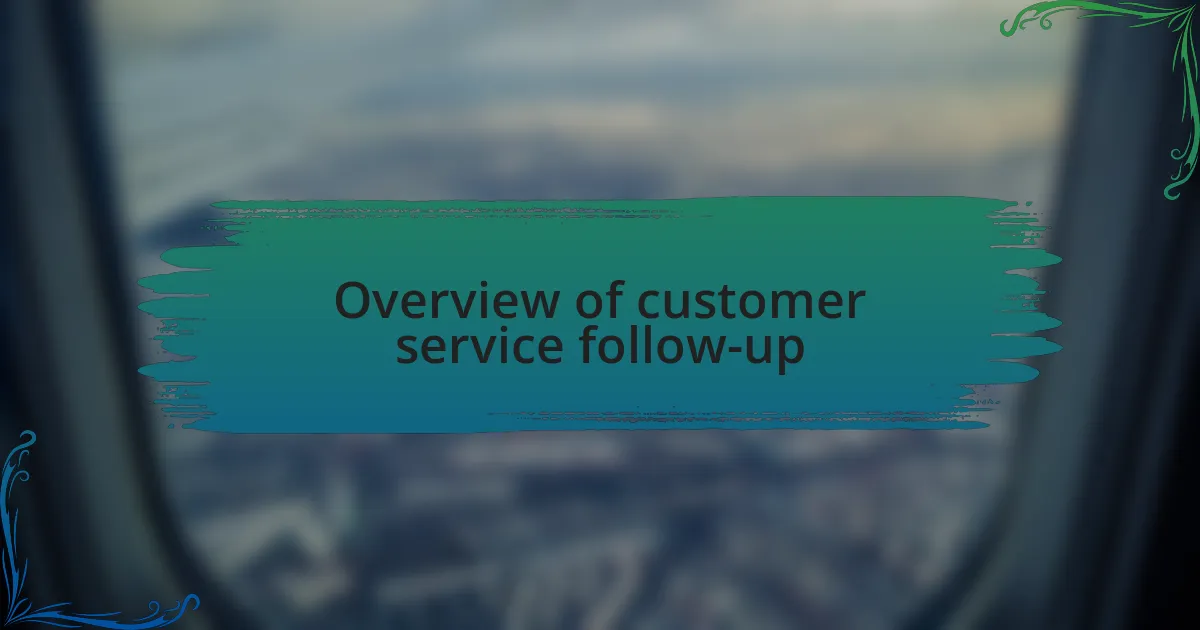
Overview of customer service follow-up
Customer service follow-up is a critical part of the customer experience, acting as a bridge between the initial interaction with the airline and any subsequent concerns or questions. I remember a time when I reached out to Thai Airways regarding a luggage delay. The follow-up call I received a few days later made me feel valued and reassured about the situation—it’s those little moments that can turn uncertainty into trust.
What stands out to me about their follow-up process is the personalized touch. It’s not just about checking a box; it’s about genuinely understanding the customer’s experience. Have you ever felt delighted when a company took the time to follow up on your issue? That sense of care can make a world of difference. Thai Airways seems to aim for that level of engagement, which I believe is key to retaining loyal customers.
I’ve noticed that effective follow-ups not only address immediate concerns but also invite further dialogue. This approach transforms customers from passive recipients into active participants in their travel journey. When I was asked for feedback after my experience, it made me reflect on how much my opinion mattered to them. That simple act of soliciting feedback builds a deeper connection and creates a sense of community around the brand.
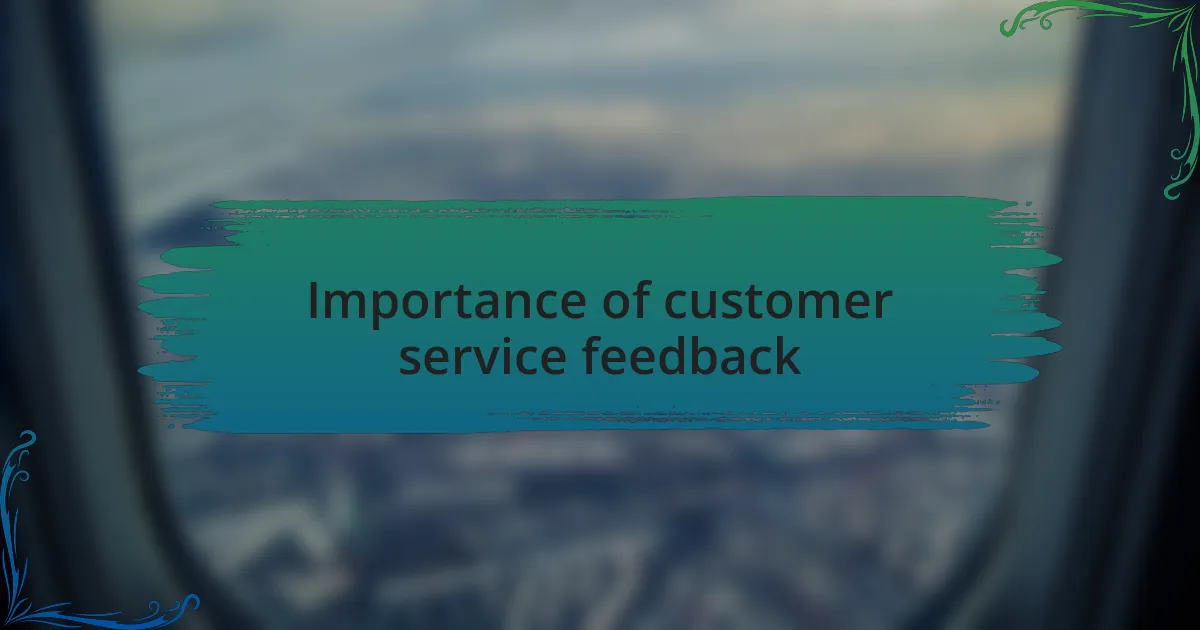
Importance of customer service feedback
Receiving feedback on customer service is crucial for any business, including airlines like Thai Airways. When I took the time to share my thoughts after an experience, it felt empowering to voice my opinion. Do you realize how often feedback leads to tangible improvements? Companies can identify and resolve issues that may go unnoticed without that crucial customer perspective.
Moreover, customer feedback serves as a guiding star for training staff in delivering exceptional service. I recall suggesting a more streamlined check-in process during my feedback submission. A few months later, I noticed improvements that made my next travel experience smoother. Isn’t it satisfying to know that your insights could influence positive changes?
Lastly, feedback is not just a tool for improvement; it builds a community of engaged customers. When Thai Airways encouraged me to share my experiences, it created a connection that felt personal. Have you ever felt part of something bigger simply because a brand valued what you had to say? That encourages not only customer loyalty but also a shared sense of belonging among travelers.
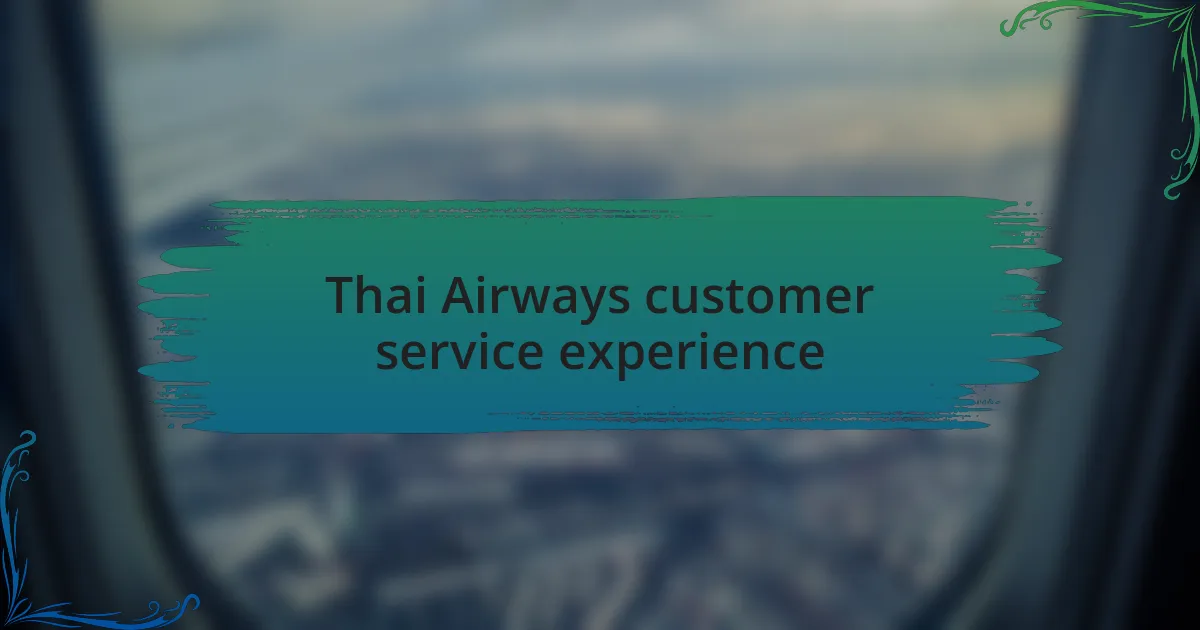
Thai Airways customer service experience
After my recent trip with Thai Airways, I was struck by the warm hospitality I received from the cabin crew. Their attentiveness made a long flight feel much shorter and more enjoyable. Have you ever noticed how a simple smile or a kind word can uplift your entire travel experience? It’s these small gestures that truly set Thai Airways apart in the competitive airline industry.
One particular instance stands out: I had an issue with my in-flight meal preference, and I casually mentioned it to a flight attendant. To my surprise, she not only addressed it immediately but also followed up later to ensure I was satisfied. How often do you encounter such thoughtful service? It left a lasting impression on me and reinforced my choice to fly with them again.
The follow-up service after my departure was equally commendable. A few days later, I received an email from Thai Airways thanking me for my business and inviting further feedback. This level of engagement made me feel valued, as though my opinion genuinely mattered. Isn’t it refreshing to see an airline invest time in nurturing relationships with its passengers in this way? Such initiatives create a deeper connection and make future journeys even more anticipated.
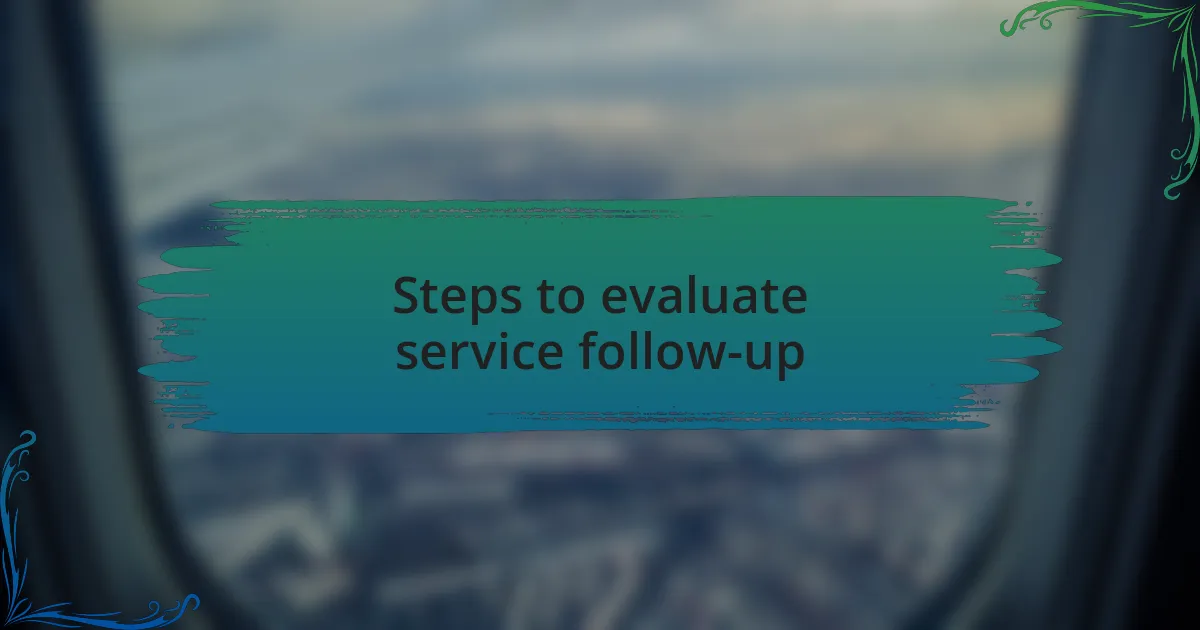
Steps to evaluate service follow-up
When evaluating a service follow-up, I found it helpful to first assess the clarity and timeliness of the communication. For instance, how quickly did Thai Airways reach out after my experience? Their promptness showed a genuine interest in addressing any concerns, which instantly made me feel heard.
Next, I consider how effectively they addressed my feedback. Did they ask specific questions or seek detailed insights into my experience? I recall being impressed when they followed up with tailored inquiries about my recent flight, not merely generic ones, indicating that they truly valued my opinion. It’s this level of detail that demonstrates commitment to continual improvement.
Lastly, I reflect on the emotional impact of their follow-up. Did it leave me feeling valued and understood? Being acknowledged in such a personalized manner after my journey created a sense of loyalty towards the airline. Have you ever experienced follow-up communication that made you feel appreciated? For me, that’s a crucial part of evaluating any service.

Suggestions for improvement
One suggestion for Thai Airways would be to enhance the personalization of their follow-up messages. When I receive a follow-up, I appreciate it when the communication feels tailored to my experience. It makes me feel like I’m more than just another passenger. What if they included a brief summary of my flight details or referred to specific aspects of my feedback in their message? This personal touch could significantly strengthen customer relationships and make passengers feel valued.
Another area of improvement could be the speed of the follow-up process. I once experienced a delay in receiving feedback after expressing my concerns, which left me feeling somewhat neglected. Timely responses are essential in demonstrating an airline’s accountability. Perhaps implementing a system that guarantees a follow-up within a certain timeframe could show passengers that their input is genuinely valued and prioritized.
Furthermore, encouraging two-way communication could make a world of difference. I believe that opening up channels for passengers to ask further questions after their initial feedback could enhance engagement. During my own interactions, I sometimes felt hesitant to reach out again, fearing it wouldn’t lead to more detailed insight. Wouldn’t it be great if Thai Airways could foster an open dialogue that includes ongoing conversation? This could boost passenger trust and loyalty by making them feel like active participants in the improvement process.
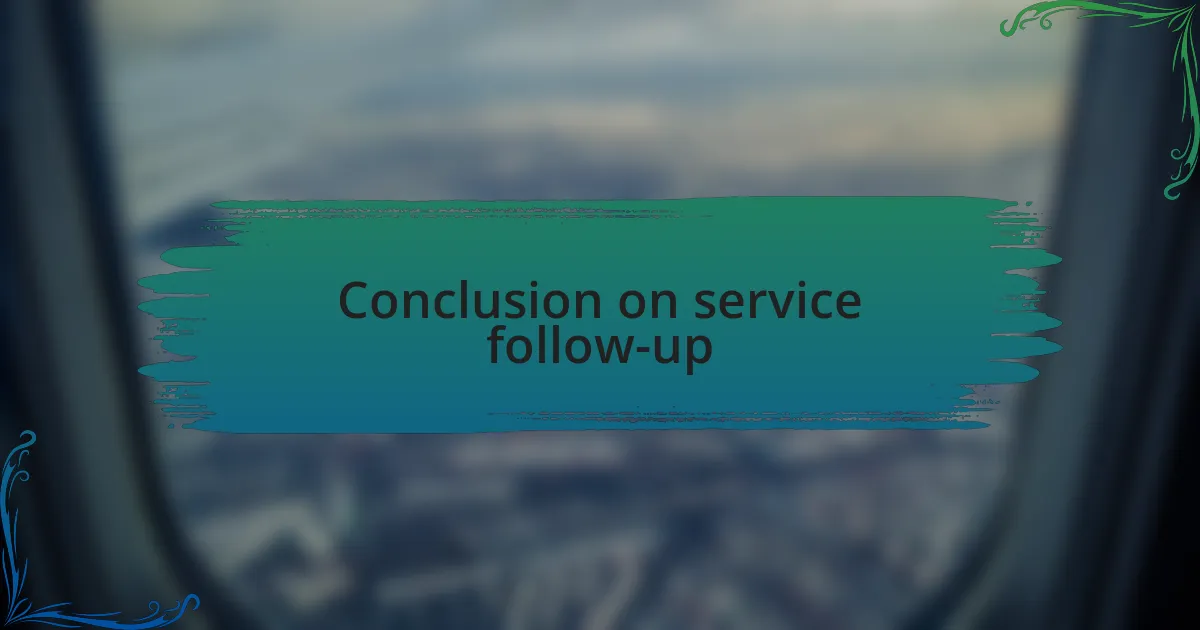
Conclusion on service follow-up
Effective service follow-up is crucial for fostering a strong connection between Thai Airways and its customers. From my perspective, when I receive a thoughtful follow-up, it feels like the airline is genuinely interested in my experience. Have you ever noticed how a simple acknowledgment of your feedback can leave a lasting impression? It’s like receiving a warm handshake after a great meal; it makes the entire journey feel more complete.
Reflecting on my interactions, I find that responsiveness truly matters. There was a time when I felt a bit isolated after a flight experience went awry, and the delayed response only intensified that feeling. What if Thai Airways could adopt a more proactive approach—perhaps a friendly nudge within 24 hours of a complaint? Such swift communication could not only ease customer concerns but also demonstrate the airline’s commitment to improvement.
Moreover, I believe that the follow-up should not just be a one-way street. Engaging passengers in a conversation post-feedback makes them feel valued. I remember a situation where I had a question after providing input, yet I hesitated to ask. What if there was a platform where I could easily reach out for clarity? Creating spaces for ongoing dialogue could enhance passenger loyalty and trust, turning the feedback process into a collaborative experience that benefits everyone involved.